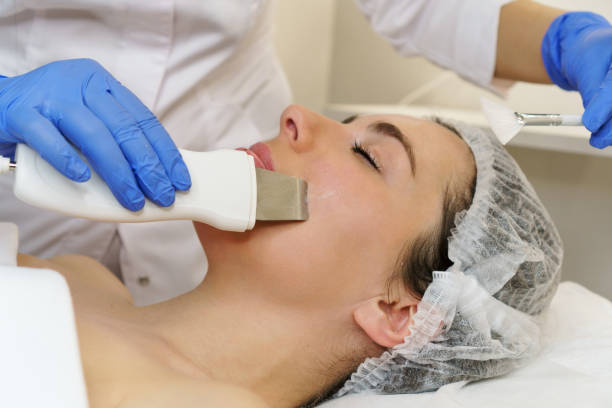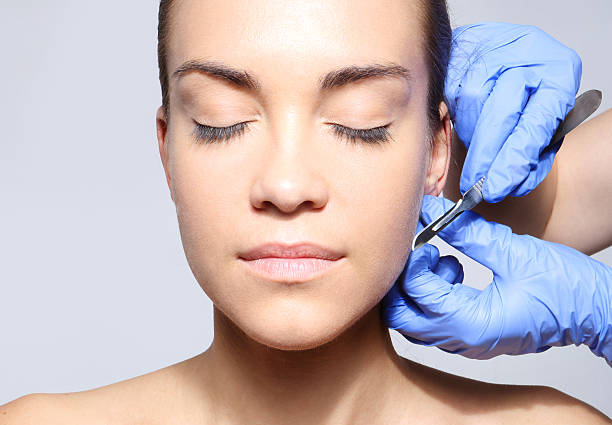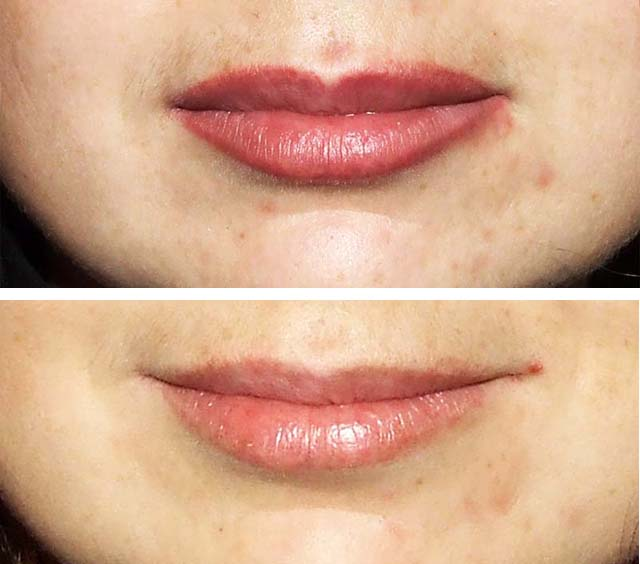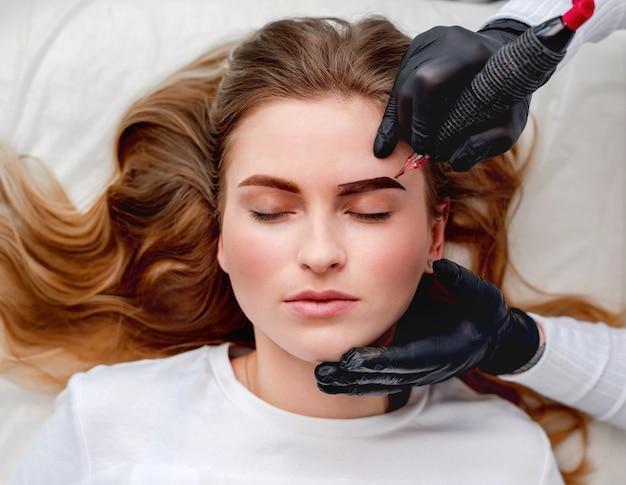Dermaplaning has been all the rage in the beauty world, touted for leaving skin smooth and radiant by exfoliating dead skin cells and peach fuzz. However, with every cosmetic procedure, it is crucial to consider the potential for unpleasant reactions. This article provides an in-depth look at the side effects associated with dermaplaning, empowering you with the knowledge to achieve the best possible outcomes from this popular skincare treatment.
Dermaplaning Demystified

Dermaplaning is a non-invasive, physical exfoliation method that uses a sterile, surgical scalpel to gently scrape off the top-most layer of dulling dead skin cells along with fine vellus hair, popularly known as peach fuzz. This procedure aims to make the skin’s surface smooth, youthful, and radiant. It is also claimed to enhance the effectiveness of other skincare treatments by allowing better product penetration. The entire process is quick, often requiring no more than 20 to 30 minutes in a dermatologist’s clinic or a licensed esthetician’s practice.
The Glow and Gains of Dermaplaning

Dermaplaning is a popular skincare treatment that involves the careful scraping of the top layer of skin using a specialized scalpel. This procedure not only removes dead skin cells but also eliminates fine facial hair, leaving the skin incredibly smooth and radiant. Here are some of the key benefits and gains of incorporating dermaplaning into your skincare routine:
- Enhanced Product Penetration:
By removing the outermost layer of dead skin, dermaplaning increases the skin’s ability to absorb skincare products more effectively, enhancing their benefits. - Immediate Results:
Dermaplaning provides instant improvement in skin texture and tone, making it a favored choice for those seeking a quick enhancement before events. - Reduction of Acne Scars:
Regular dermaplaning sessions can help reduce the appearance of acne scars and uneven skin tone by promoting new skin growth. - Removal of Peach Fuzz:
While primarily known for its exfoliating benefits, dermaplaning also efficiently removes fine facial hairs, which can trap dirt and oils. - Smoother Makeup Application:
Makeup applies more smoothly and evenly on freshly dermaplaned skin, creating a flawless finish.
The Potential Downsides: Understanding the Side Effects
Although many enjoy the benefits of dermaplaning without complications, it’s important to acknowledge that some may experience side effects. These can range from mild redness to noticeable irritation. Individuals may also experience an increase in acne breakouts post-procedure, especially if their skin is prone to acne. Below is an elaborated list of common side effects encountered after a dermaplaning session.
- Redness and Irritation:
The scraping action of the scalpel, despite being gentle, can cause temporary redness and skin sensitivity. - Acne and Breakouts:
The removal of surface debris and oils can sometimes lead to acne flare-ups, as the skin adjusts to its new state.
Skin Irritation and Sensitivity
The removal of the outermost skin layer may leave the skin more prone to irritation from environmental factors and skincare products. Because of this increased sensitivity, individuals should be selective about the products they apply post-procedure, opting for gentle, non-comedogenic, and fragrance-free options whenever possible. Additionally, indulging in soothing practices, such as the application of calming serums or masks, can mitigate such reactions.
Acne and Breakouts: Are They a Risk?
Concern about acne and breakout after dermaplaning is valid, especially for those with acne-prone or oily skin types. The procedure can trigger the skin to produce excess oils as a response to the exfoliation, which can clog pores and lead to breakouts. It is, therefore, critical to follow a skincare regimen that maintains the balance of the skin’s natural oils while keeping the pores clear.
When Good Skin Goes Bad: Adverse Reactions to Watch For
While infections and scarring are rare side effects of dermaplaning, they are risks that should not be ignored. Any procedure that involves the skin barrier comes with the potential for bacteria to enter the exposed layers. To mitigate this risk, it’s essential to ensure the procedure is done with sterile equipment in a clean environment. Should scarring occur, it is often a result of deep cuts or an aggressive technique, highlighting the importance of choosing a qualified professional for the service.
Allergic Reactions and Product Sensitivity
Post-dermaplaning, the skin can exhibit increased sensitivity to products, resulting in allergic reactions or discomfort. Given this heightened sensitivity, it’s advisable to introduce new skincare products gradually and to perform patch tests where possible. Skincare professionals might also recommend avoiding certain ingredients that are known to be more reactive on freshly exfoliated skin.
Precautions and Pre-Procedure Guidelines
Not everyone is an ideal candidate for dermaplaning. Before proceeding, it is vital to consult with a skincare professional who can evaluate skin type, condition, and concerns. During the consultation, you should openly discuss your skincare routine, allergies, and any history of skin conditions. The professional’s assessment can help determine if dermaplaning is appropriate or if another treatment would be more beneficial.
Post-Dermaplaning Care: Ensuring Optimal Outcomes
As with any skin treatment, what you do afterward can radically affect the outcome. Following a dermaplaning treatment, experts will recommend a tailored plan that nurtures and protects the skin. This may include using sunscreen religiously, applying mild skincare products, and avoiding direct sun exposure. This care will support the skin in healing properly and maintaining the glow achieved from the procedure.
| Immediate Post-Treatment Care | Continued Skincare Recommendations |
|---|---|
| Avoiding direct sun exposure | Regular use of SPF protection |
| Application of gentle moisturizers | Incorporation of hydrating serums |
| Staying away from exfoliating agents | Limited use of retinoids or acids |
Conclusion
In conclusion, while dermaplaning can provide significant aesthetic improvements to the skin, it is essential to be aware of the potential side effects that may arise. Redness, sensitivity, and in some cases, acne or allergic reactions can occur. Proper technique and post-treatment care are critical in minimizing these risks. Always consult with a professional to determine the suitability of dermaplaning for your skin and to receive personalized advice on pre and post-procedure care.
FAQs About Dermaplaning Side Effects
Q1: How common is it to experience side effects after dermaplaning?
A1: Side effects are not uncommon following a dermaplaning procedure, yet most are typically mild and short-lived. Ensuring that a reputable professional performs the treatment can reduce the likelihood of experiencing more severe side effects.
Q2: What should I do if I experience severe skin irritation after dermaplaning?
A2: If severe irritation persists, discontinue the use of any products that could be contributing to the irritation and consult with a skincare professional. They can offer guidance on healing your skin and preventing further irritation.
Q3: Can I wear makeup immediately after dermaplaning?
A3: It is advisable to wait at least 24 hours before applying makeup to let your skin recover and reduce the risk of clogging your pores, which could lead to breakouts.
Q4: Is there anyone who should avoid dermaplaning altogether?
A4: People with certain skin conditions such as those with active acne outbreaks, highly sensitive skin, or conditions like eczema and rosacea should proceed with caution or avoid the treatment due to the potential for increased irritation and exacerbation of their conditions.
Q5: Can dermaplaning cause permanent scarring?
A5: Permanent scarring is extremely rare when dermaplaning is performed correctly. To prevent risks of scarring, always entrust your skin to qualified and experienced professionals.




